One of the oldest stories about Kali that’s told in Bengali households harks back to when the male gods failed to control the mayhem unleashed by rampant asuras. The formidable goddess, in her rage-infused avatar, appeared to put a stop to the pandemonium. Her glorious arrival — wearing a garland of human heads, holding a blood-stained sickle in one hand and a freshly-severed demon head dripping with blood in another, surrounded by a cloud of loose black hair, her right foot resting atop the chest of a pacific Shiva — is an indelible one.
This Dakshinakali avatar is also one of the earliest representations of Kali in a painting, as described in the 5th century Puranic text, Devi Mahatmyam. And it is this image that sets the tone for DAG’s Kali: Reverence & Rebellion: her dark blue form, ornamented with gold, depicted with protruding bloody tongue and a halo that accentuates her divine status.
Dakshinakali by an unidentified artist (Early Bengal School)
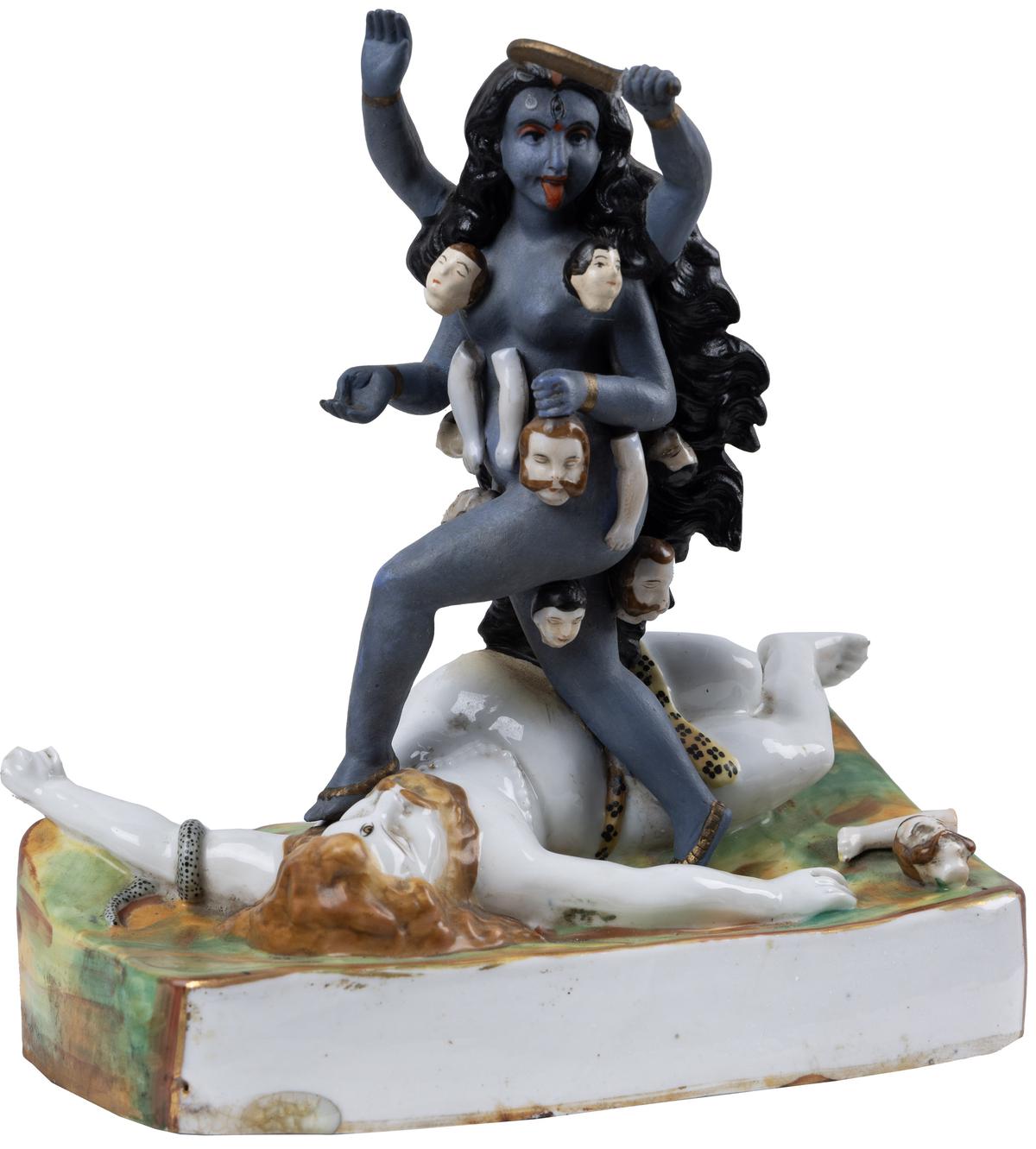
A Dakshinakali sculpture in German porcelain by an unidentified artist
The group show spans about 300 years of imagemaking. “The principal challenge was to draw out a continuous history of the evolution of Kali’s image, and to relate it with social phenomena. I was keen to look at how the goddess has been appropriated by different groups of disenfranchised communities, and how her image — distorted as monstrous in colonial times — has been accommodative of all the different demands,” says curator Gayatri Sinha. “In this sense, Kali is not to be seen merely as a symbol of death, but as a beacon of hope because she has empowered groups demanding inclusion and authority.”
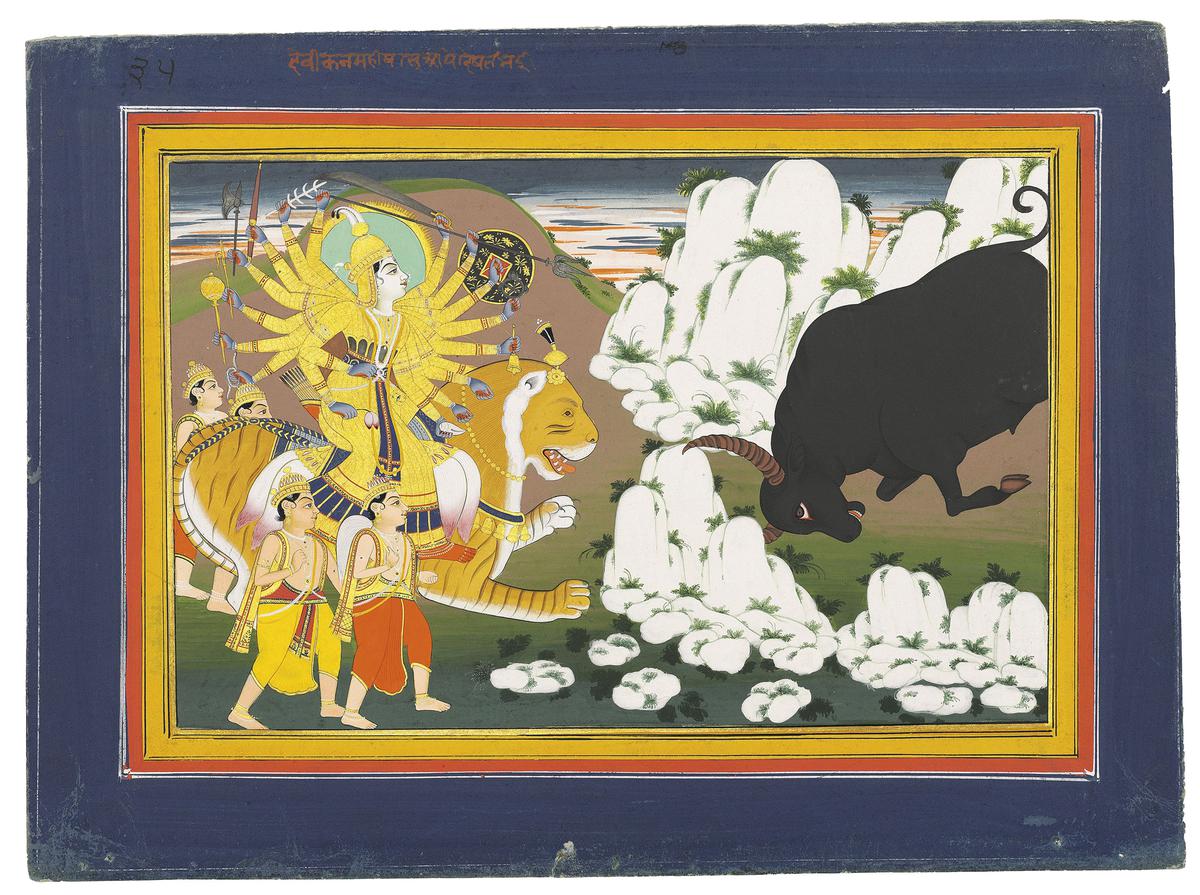
Durga confronts the Bull Demon, Mahishasura, by a Jaipur miniature painter
Through the centuries
On a Saturday morning, I join a group of 40 on the second floor of DAG’s Delhi gallery, which is flooded with natural light, for a walkthrough with Sinha. Divided into sections, the exhibition traces Kali’s influence across the subcontinent, through miniatures, paintings by Indian and foreign artists, sculptures, breastplates and more. I spot a 19th century European rendition of the goddess that has a subdued colour palette, inspired by classical paintings from the continent. Kali is left unadorned, her wild hair tied at the back, and the obvious element of nudity cloaked with a garland of heads around her waist.
There are her benign incarnations that emerged during the 16th and 17th centuries — the generous mothers of the universe, Jagaddhatri and Tripura Sundari. The aspect of tantrism, which is often associated with the worship of Kali, is explored by Kashmiri artist Gulam Rasool Santosh in his geometrical acrylic on canvas compositions. Santosh was one of the central artists of Indian art’s Neo-Tantra movement, and the chakras in his work resemble the goddess’s tantric body, with an emphasis on her breasts.
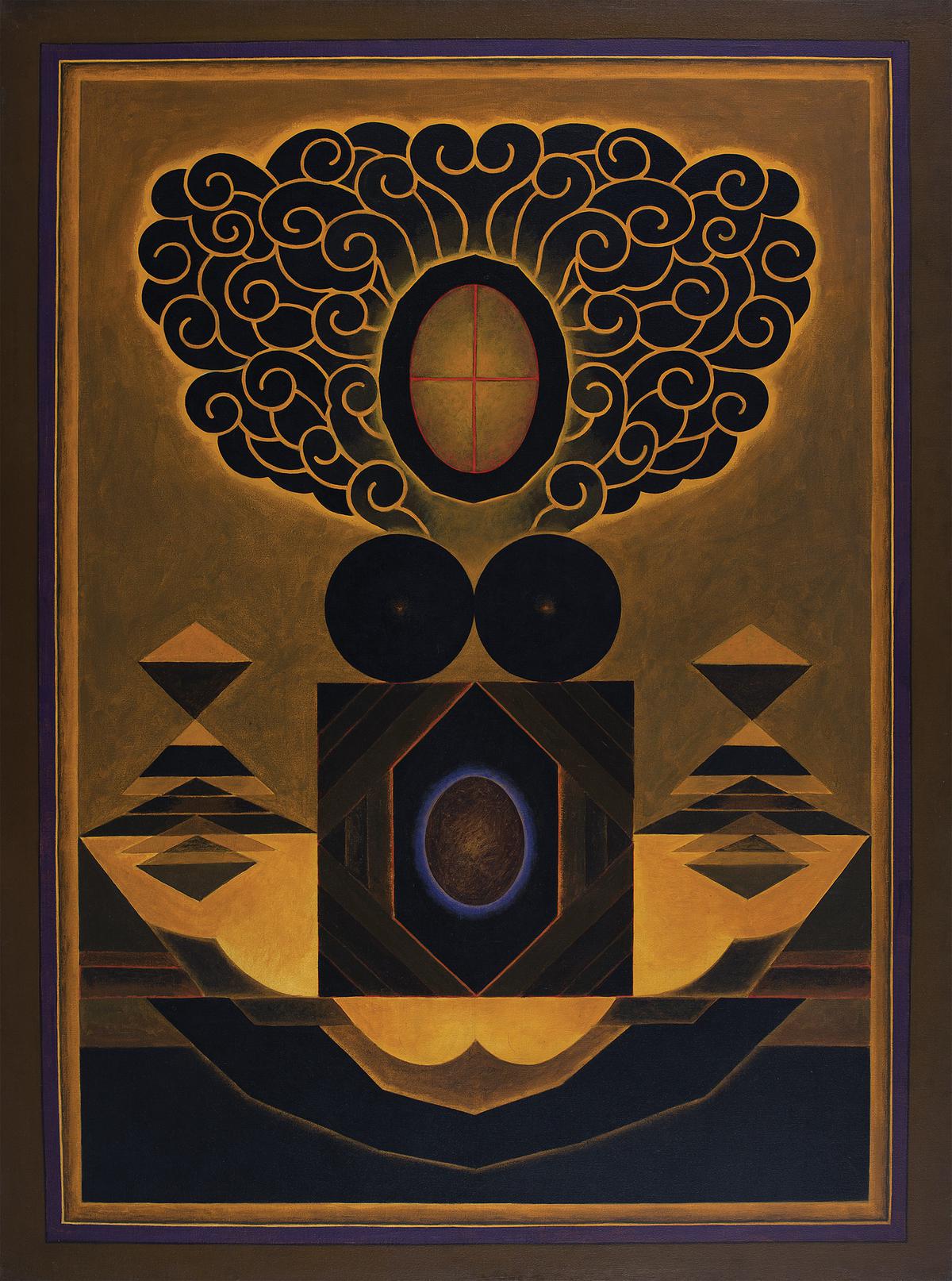
Untitled by Gulam Rasool Santosh
A significant shift in the narrative appears when Kali is seen as a figure of rebellion. Right through the 20th century, the goddess is appropriated by different groups. In National Press Cawnpore’s version, one sees Subhash Chandra Bose — rendered in Chhinnamasta’s iconography — presenting his own head in one hand while wielding a sword in the other to urge people to participate in the fight for independence. In another image (a frontispiece of James Campbell Kerr’s 1917 report, Political Trouble in India), a bare-breasted Kali is seen wearing a garland of severed heads of Englishmen, a portrait intended to evoke revolutionary fervour and brand her as the leader of the Indian rebellion.
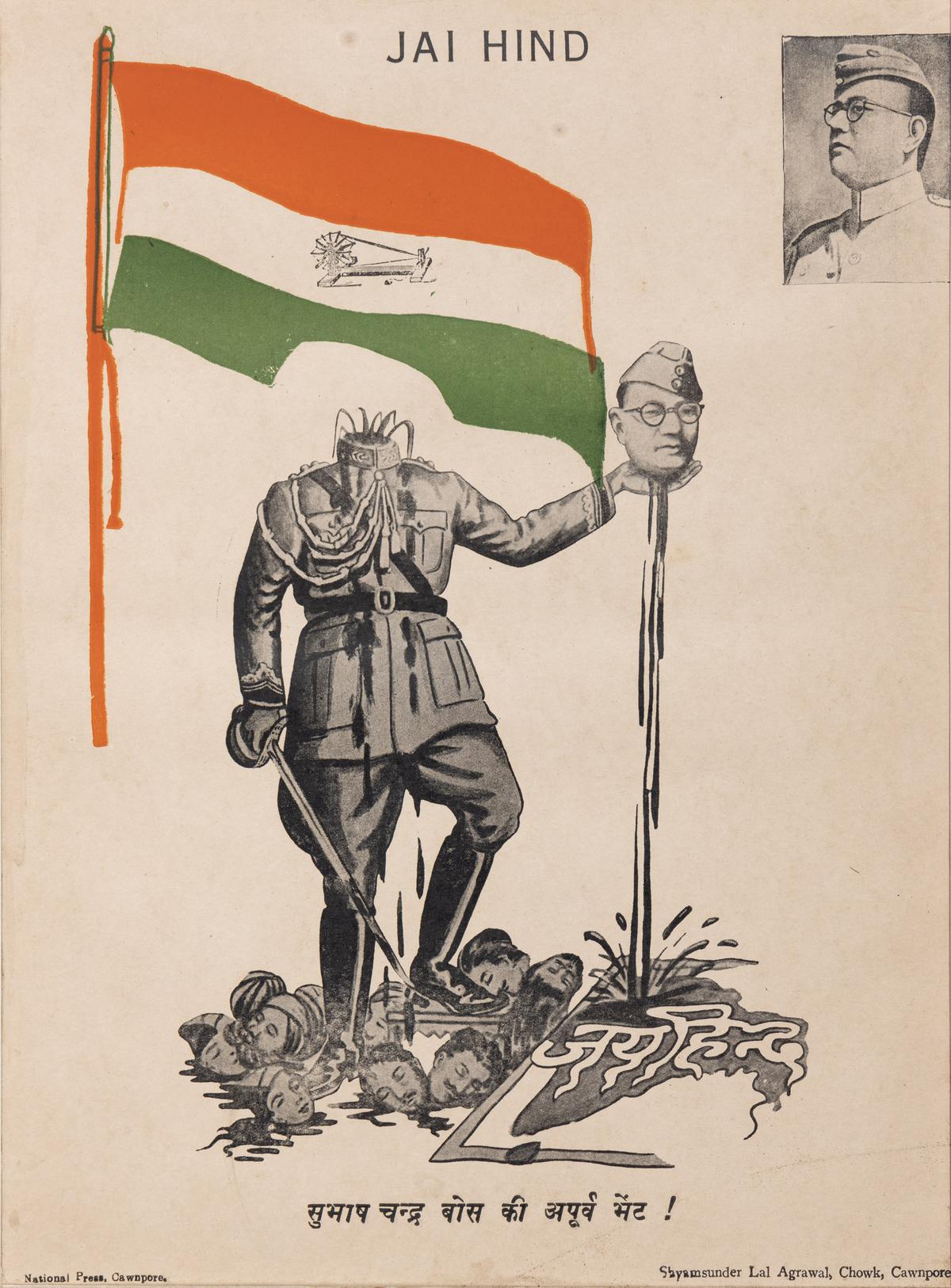
National Press Cawnpore’s version
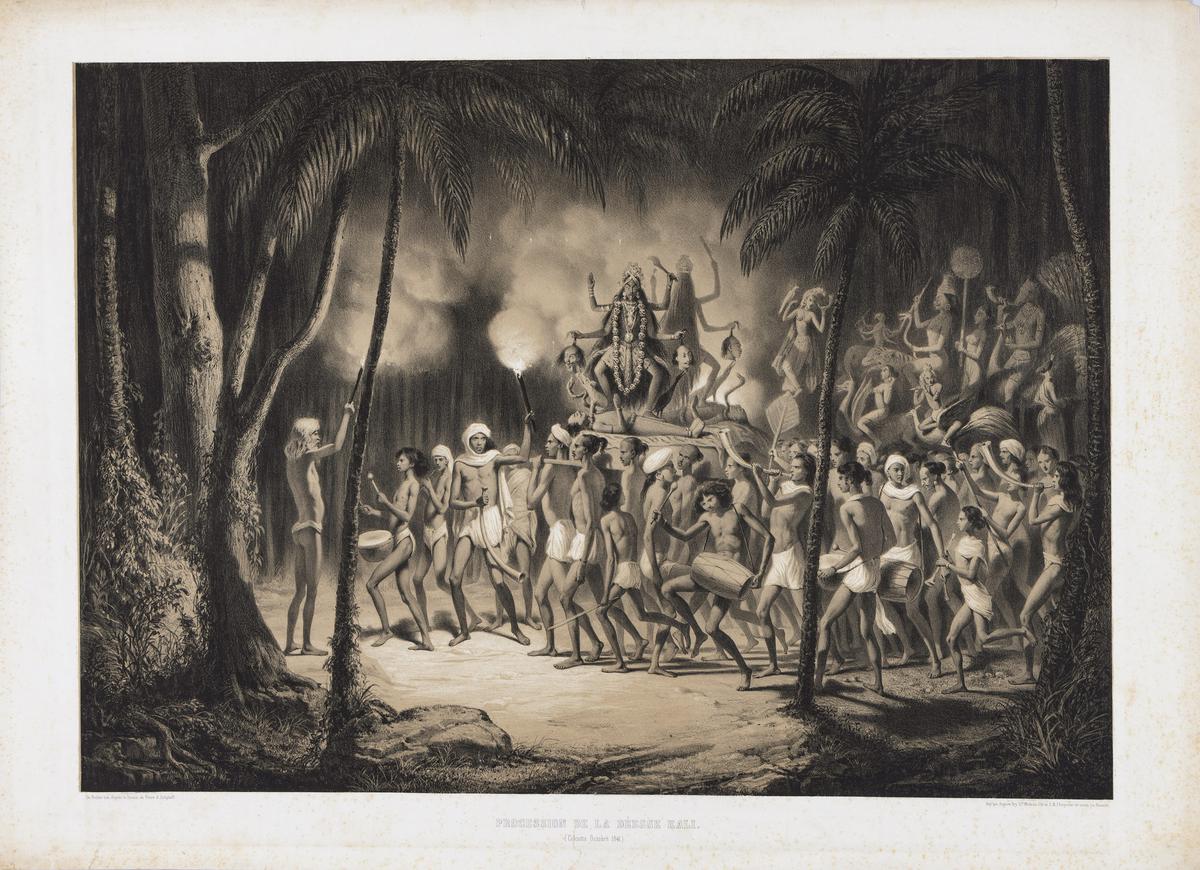
Procession de la Deesse Kali by Russian artist Prince Alexis Soltykoff, and engraved by Louis Henri de Rudder
The goddess of protest
“Kali’s reverence extends into manifold Shakti peethas [seat of Shakti], as well as groups and communities,” says Sinha. The goddess identifies with the subaltern and protest movements strongly, and it’s a mutually progressive relationship. One of the best examples of this social dynamism is the Theyyam performance of Kerala’s Malabar coast — represented at DAG through a breastplate. The art form celebrates Bhadrakali as one who restores justice, who advocates for women’s dignity and the oppressed. Performed by Dalit men, it makes the deity a social equaliser.
When it comes to modern interpretations, many renowned artists are included. M.F. Husain’s sketch of Kali as a voluptuous woman stands out. Resting on her bent knees, with one hand touching her hips and the other holding a flower, the figure evokes eroticism. Then there is Satish Gujral’s artwork, a primitive looking burnt wood sculpture (part of a series produced after the 1984 Sikh riots) adorned with cowrie shells and leather threads; Mukul Dey’s expert dry point on rice paper illustration of the ritual worship during Durga Puja in West Bengal; and political artist Chittaprosad Bhattacharya’s (best-known for his documentation of the 1943 Bengal Famine) print of the eight-armed goddess Durga from an engraved plate circa 1967.
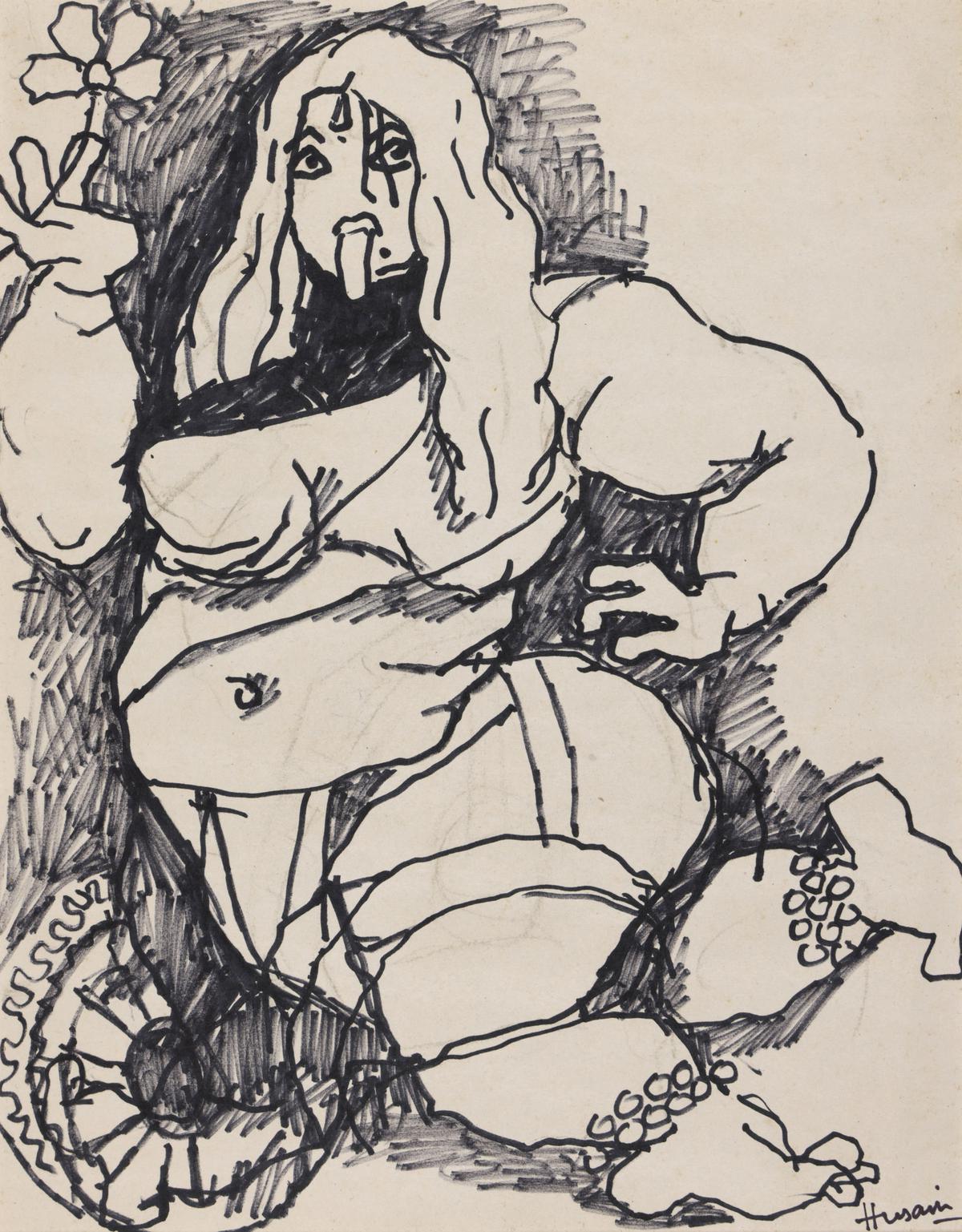
M.F. Husain’s sketch
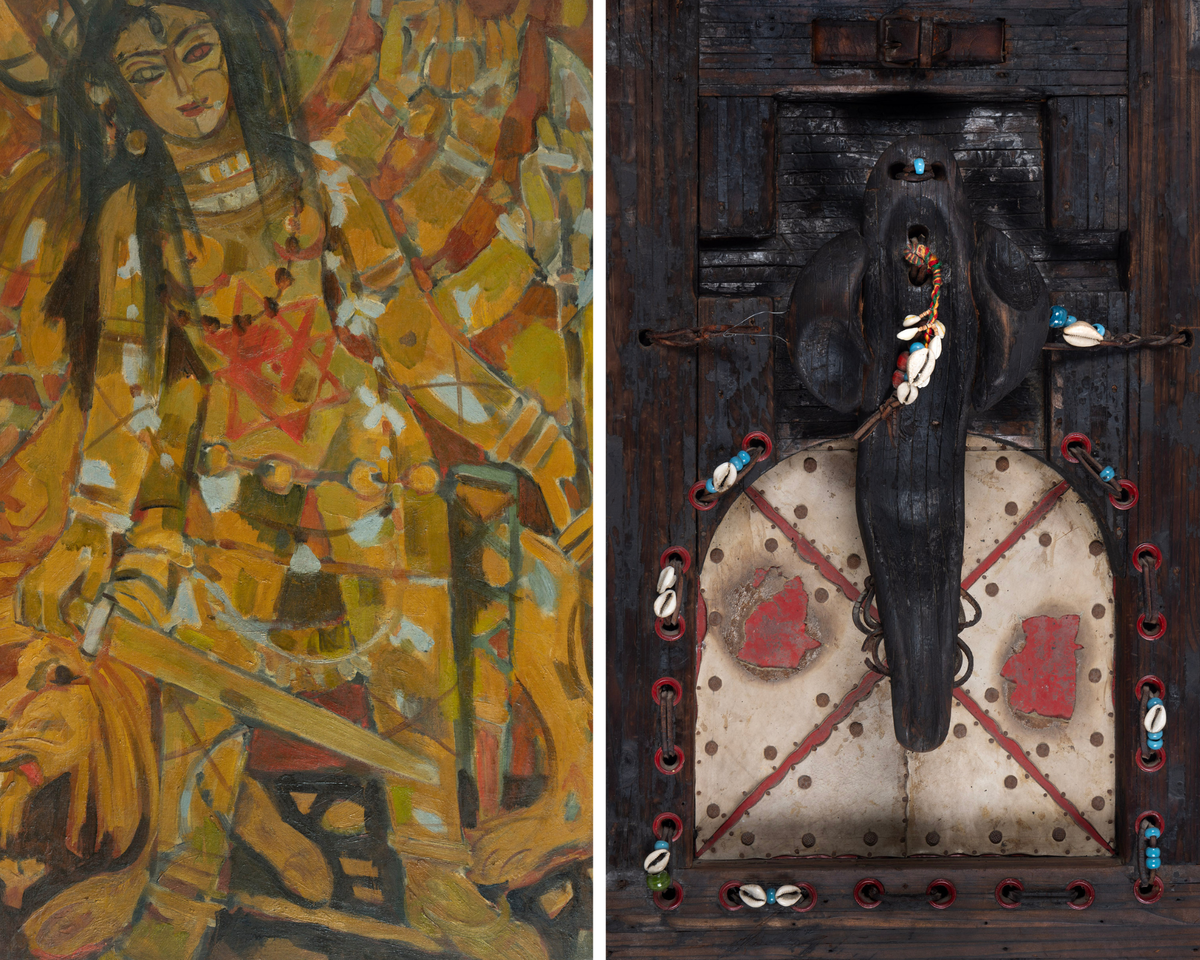
Durga Alone Ready to Fight by Nirode Mazumdar, and (right) Untitled by Satish Gujral
“While it’s impossible to quantify how many modernists have chosen to paint the deity, she has been a crucial subject for many notable Indian modernists,” says Ashish Anand, CEO and managing director of DAG. “Tyeb Mehta’s Kali is perhaps the best example. Nirode Mazumdar’s paintings are characterised by abstract figural compositions. In a highly personalised form of worship, Mazumdar’s paintings of Devi as Durga, Kali or Tripura Sundari defy the logic of conventional iconography.”
Each representation has a purpose, whether reverence, stigmatisation, performance or modernism. And this is exemplified in the eponymous publication that accompanies the exhibition. “It traces the religious, historical, social, political and gendered journey of the fierce goddess across the Indian subcontinent,” says Anand, adding that the show will travel to their Mumbai and Kolkata galleries next.
Kali: Reverence & Rebellion is on display at DAG, New Delhi, until the end of March.
The independent writer is Delhi-based.